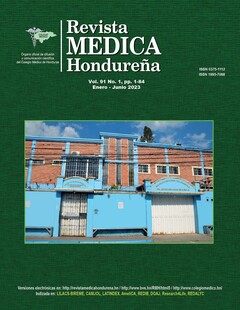Clinical characteristics and endoscopic findings in children with portal hypertension seen in a pediatric hospital
DOI:
https://doi.org/10.5377/rmh.v91i1.16284Keywords:
Endoscopy, Portal hypertension, PediatricsAbstract
Background: The portal hypertension (PH) is defined as the pathologic elevation in the portosystemic pressure gradient over any segment of the portal venous system. Objective: Establish clinical characteristics and endoscopic findings of patients with PH seen in a public sector pediatric hospital. Methods: An observational, descriptive, retrospective study was performed. The universe was all patients aged 18 years or younger with a diagnosis of PH who attended the pediatric gastroenterology service of the HMEP between 2015-2022. The entire universe was taken for analysis. Univariate descriptive data analysis was performed using STATA 15.1 software. Results: A total of 38 patients files were reviewed, 55.3% (21/38) were upon preschool age. The 57.9% (22/38) were male and the most frequent level of schooling was incomplete primary school in 55.3%. A 79% patient’s place of provenance (30/38) were from the central and eastern part of the country. Most common clinical presentation was with an upper gastrointestinal bleeding (UGIB), which was found in 42% of patients (16/38) and the most frequent etiology was pre-hepatic being 65.8% (25). Discussion: The onset was found to be in preschool children, with a predominance of males, and pre-hepatic causes were the most frequent aetiology of UGIB, coinciding with those published by other authors. UGIB was the predominant initial symptom, evidenced by endoscopic findings such as oesophageal and gastric varices. Conclusion: PH is rare in children, and has severe consequences on the quality of life and patient survival.
Downloads
337
Downloads
Published
How to Cite
Issue
Section
License
Copyright (c) 2023 Autor(es)

This work is licensed under a Creative Commons Attribution 4.0 International License.




